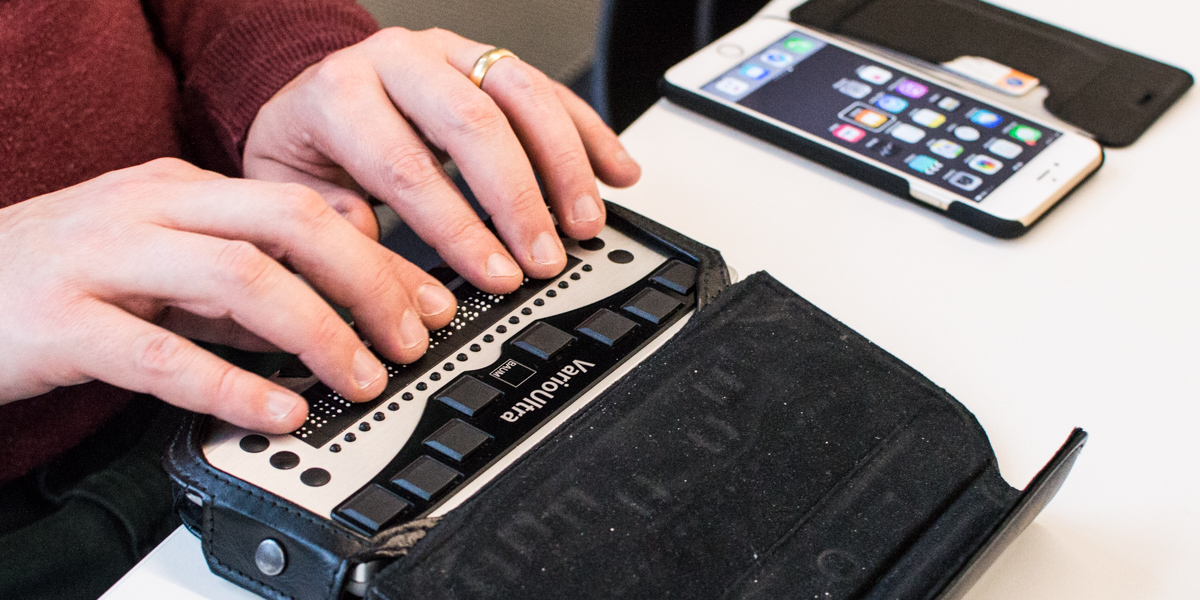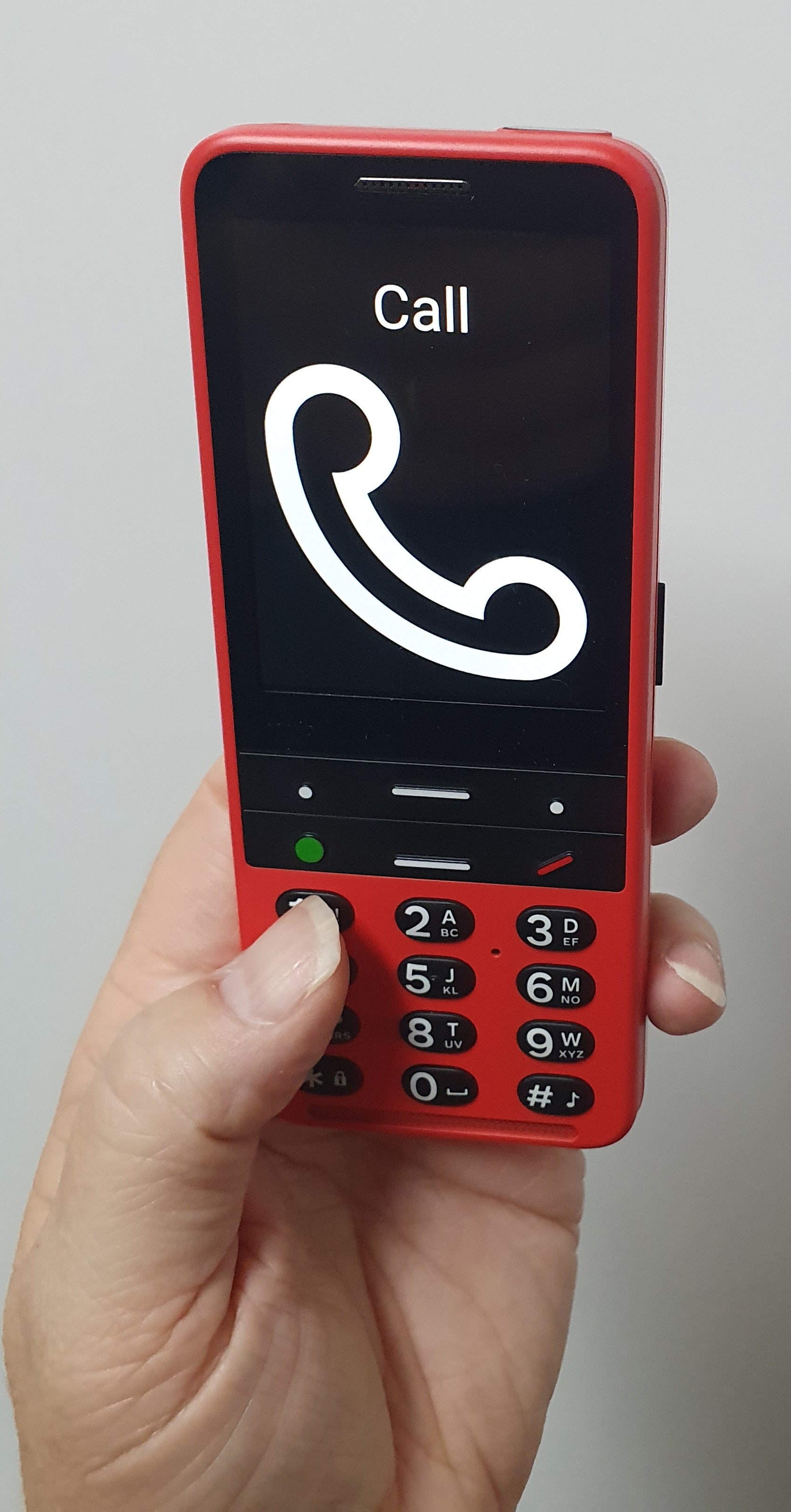Discover Cutting-edge Devices Developed for the Visually Damaged
The development of ingenious tools for the aesthetically impaired represents a substantial development in access and independence. Technologies such as clever glasses with AI abilities and mobile applications created to provide acoustic descriptions are improving everyday experiences for individuals. Additionally, wearable devices that use haptic feedback boost ecological recognition, while modern-day Braille technologies offer new means to engage with text. As these tools remain to advance, their effect on the lives of those with aesthetic impairments elevates essential questions concerning the future of inclusivity and autonomy in numerous elements of life. What exists in advance in this technological landscape?
Smart Glasses for Navigation

Smart glasses developed for navigation are revolutionizing the means visually impaired people interact with their environment. These sophisticated devices use a combination of electronic camera innovation, man-made intelligence, and auditory comments to supply real-time information concerning surroundings. By using challenge detection systems, smart glasses can signal individuals to potential dangers, enabling more secure movement in both familiar and unknown setups.
The combination of GPS innovation further enhances navigation capacities, enabling individuals to obtain acoustic directions as they relocate. This hands-free approach not just cultivates self-reliance yet also equips visually impaired people to browse urban landscapes with increased confidence. In addition, many clever glasses are geared up with functions that determine spots and road indicators, offering contextual information that improves the user experience.
Moreover, the growth of these devices is consistently progressing, with business functioning to enhance the precision of things acknowledgment and broaden the series of navigational features. As smart glasses come to be much more obtainable and budget-friendly, they hold the prospective to considerably transform day-to-day live for aesthetically damaged customers. Ultimately, these ingenious tools represent a critical step toward inclusivity, offering boosted flexibility and a higher feeling of autonomy for people navigating the globe around them.

Mobile Apps for Daily Living
Just how can mobile applications improve the lives of visually impaired people? Mobile apps are reinventing the method aesthetically damaged customers browse their settings, take care of everyday jobs, and access info. These applications give vital support through different functionalities, promoting self-reliance and boosting lifestyle.
Several innovative mobile apps are developed specifically for everyday living. Apps like Be My Eyes connect visually impaired customers with sighted volunteers by means of video calls, permitting them to obtain real-time aid with jobs such as reading tags or navigating strange rooms. In A Similar Way, Seeing AI, established by Microsoft, utilizes expert system to define surroundings, reviewed message, and determine things, properly transforming a mobile phone right into a powerful tool for daily aid.
Additionally, navigation apps customized for the aesthetically damaged, such as Aira and BlindSquare, provide audio-based instructions and environmental information, making it possible for individuals to traverse their environments securely and confidently. Past navigating and prompt aid, mobile apps additionally sustain company and task administration, with attributes that assist individuals establish suggestions, create order of business, and track consultations. In recap, mobile applications serve as indispensable resources, equipping aesthetically damaged people to lead even more independent and meeting lives.
Wearable Technologies for Aid
Empowerment through technology is progressively obvious in the realm of wearable devices developed to help aesthetically impaired people. These cutting-edge tools incorporate flawlessly into life, improving navigation and offering crucial comments to individuals. Wise glasses outfitted with cameras can acknowledge faces and check out message out loud, allowing users to interact even more with confidence in social and expert settings.
One more significant improvement is the usage of haptic comments systems in wearable tools. These systems use vibrations or various other responsive signals to communicate info regarding the customer's setting, such as barriers or adjustments in surface, boosting wheelchair and safety and security. Wearable modern technologies additionally consist of wristbands that link to mobile phones, informing users to notices with subtle vibrations, thus boosting connection without dependence on visual cues.
As these innovations remain to advance, they are not only boosting freedom for aesthetically impaired individuals however likewise fostering a greater feeling of incorporation in culture. By bridging the gap in between obstacles dealt with in daily living and the possibility for autonomy, wearable technologies function as pivotal devices in the quest for equal rights and empowerment for those with visual impairments.
Sound Summary Devices
Sound description devices play an essential duty in improving accessibility for aesthetically impaired individuals, offering them with the capacity to involve with visual media. AI-powered visual aids. These tools use narrated descriptions of crucial visual elements in movies, tv shows, and live efficiencies, ensuring that users can totally understand the context and emotions conveyed through visuals
Audio description can be integrated into different platforms, including streaming services, cinema screenings, and live cinema. Several prominent streaming solutions currently consist of audio summary as an access feature, enabling audiences to choose it quickly. Along with traditional media, specialized apps also exist, offering audio summaries for art events, museums, and various other cultural occasions.
The effectiveness of audio description hinges on the skill of the narrators, that should communicate aesthetic details succinctly without detracting from the initial audio. Developments in this area are additionally leading the way for even more tailored experiences, where customers can readjust the degree of information and pacing according to their preferences.
Braille Innovations and Tools
Braille tools and developments have significantly transformed the way aesthetically damaged people connect with message and details. Modern developments have led to the advancement of flexible devices that improve proficiency and freedom amongst customers.
In addition, mobile Braille notetakers incorporate traditional Braille input with modern functionalities, helping with note-taking, scheduling, and file modifying on the move. Braille displays and notetakers. glasses with magnetic frames These compact gadgets typically feature text-to-speech capabilities, bridging the void in between Braille and auditory information
On top of that, cutting-edge Braille printers have actually emerged, allowing customers to generate Braille tags, papers, and educational products effectively. This ease of access promotes greater participation in instructional and expert settings, eventually promoting inclusivity.
In addition, study into wise Braille innovations remains to expand. Instruments that Look At This integrate synthetic intelligence are being discovered to supply real-time navigation assistance and contextual details, enhancing the customer experience in diverse setups. Generally, these developments mirror a commitment to encouraging visually damaged individuals with innovation, ensuring they can quickly accessibility and engage with the globe around them.

Final Thought
The improvement of ingenious tools for the aesthetically impaired significantly boosts freedom and high quality of life. Smart glasses, mobile applications, wearable innovations, audio description devices, and Braille advancements collectively empower people by supplying vital navigation assistance, ecological understanding, and improved reading experiences. These technologies not just foster greater incorporation but additionally advertise autonomy in day-to-day tasks, ultimately adding to a much more accessible and fair society for aesthetically impaired people. Continued advancement in this field holds assurance for more enhancements.
As smart glasses end up being more available and affordable, they hold the possible to significantly transform everyday life for aesthetically damaged users. Mobile apps are reinventing the means aesthetically impaired users navigate their atmospheres, take care of day-to-day tasks, and access details. Applications like Be My Eyes connect visually impaired individuals with sighted volunteers using video calls, enabling them to receive real-time assistance with tasks such as checking out tags or browsing strange rooms.Additionally, navigation apps tailored for the visually impaired, such as Aira and BlindSquare, supply audio-based instructions and ecological details, enabling users to traverse their surroundings safely and confidently.The improvement of vision check ingenious tools for the visually damaged substantially improves self-reliance and high quality of life.